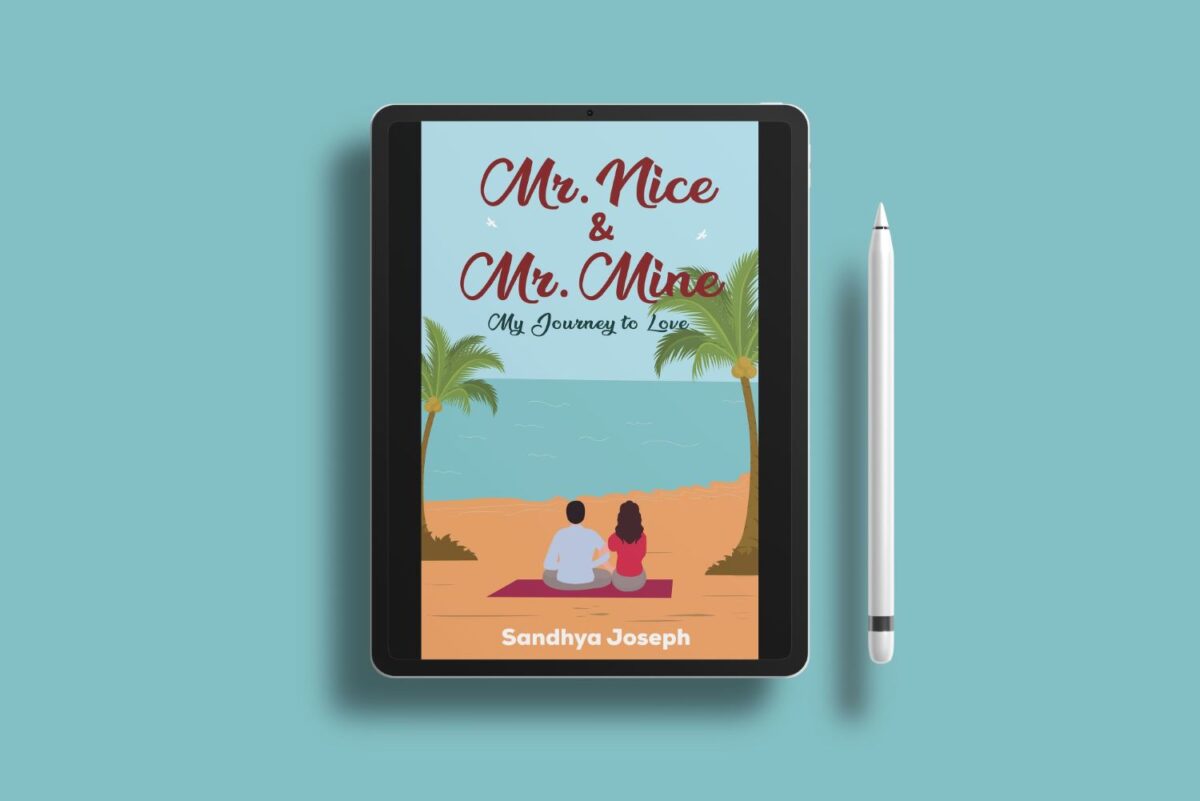Book Type: Kindle Ebook
Ebook Launch Date: First week of June 2024.
Time Period: Set in Contemporary Society.
Genre
The ebook/novel ‘Mr. Nice & Mr. Mine: My Journey to Love,’ combines three genres:
- Contemporary Second Chance Romance
- Family Drama/ Family Saga
- Coming of Age Story.
Book Blurb
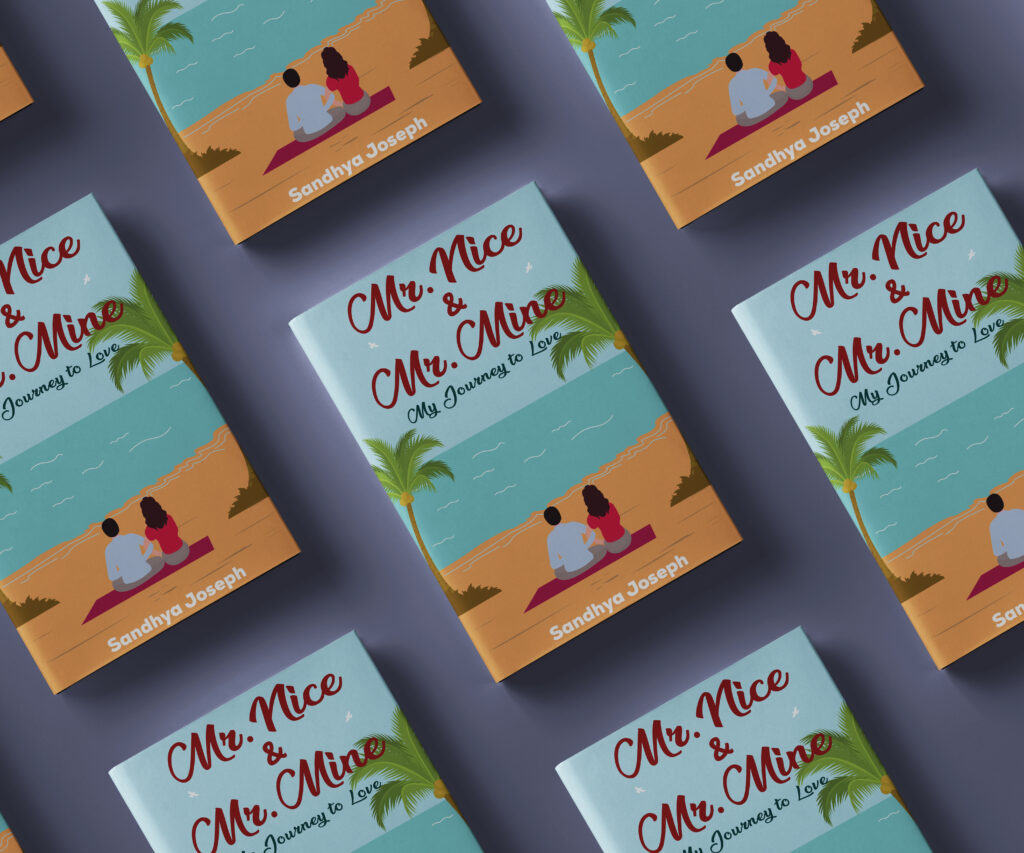
While in college, when naïve dreams intertwine with reality, a chance encounter causes Alexia to become mesmerized by the handsome and charming Stephen. Enveloped in the euphoria of infatuation, Alexia pursues the man who has her spellbound. As they enter a period of prolonged courtship, Alexia feels blessed for having found her forever love.
However, a night of carefree revelry, exposes the cracks beneath the surface of this youthful romance. Their relationship becomes a tumultuous dance of dizzying highs of passion and crushing lows of doubt.
As Stephen struggles to reconcile his heart’s desires and his professional ambitions with the weight of his commitment to his girlfriend, Alexia is forced to confront the wreckage of broken promises.
Can their college romance navigate through the challenges of the grown-up world and turn into a life-time partnership?
Set in the picturesque, coastal State of Goa, India, this poignant tale of resilience, longing, self-discovery and acceptance, explores the fragile complexities of the human heart and human relationships.
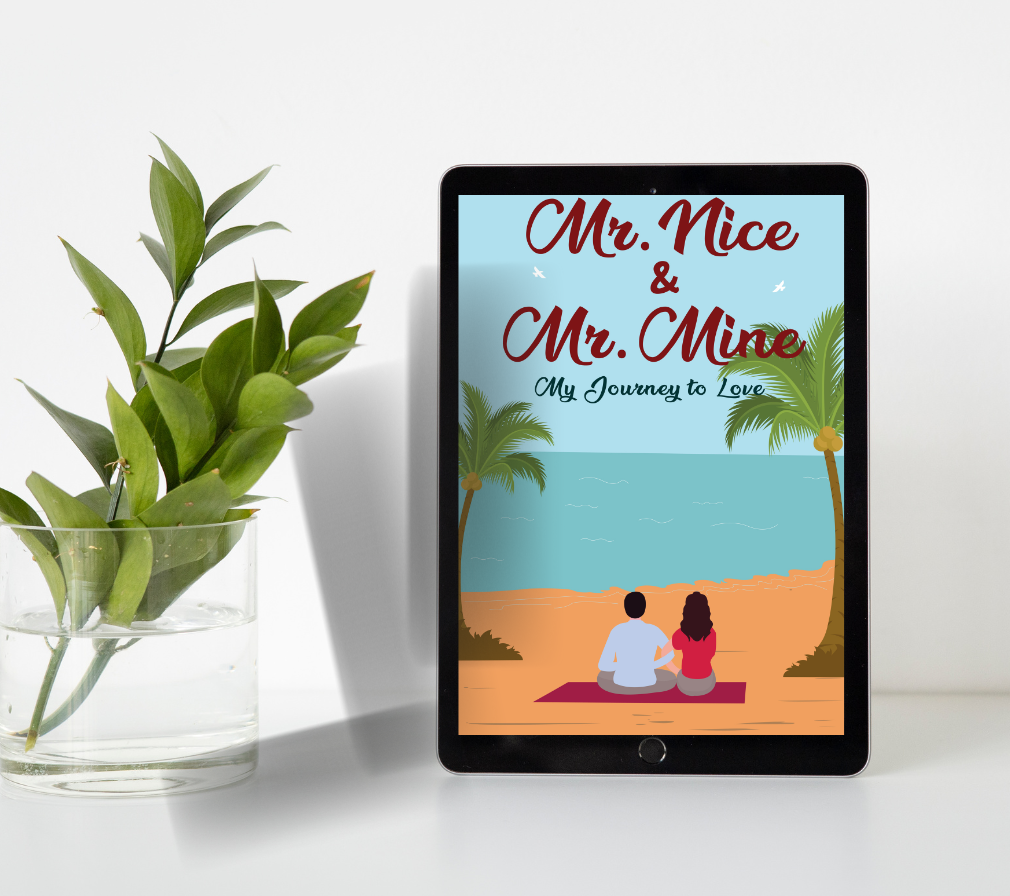
Editorial Reviews
“Mr. Nice and Mr. Mine is an extraordinary tale of love. The author crafts deeply relatable characters nestled within the beautiful landscape of Goa. The narrative offers a unique perspective on timeless themes such as marriage, love, family, and destiny,” Gautam Manerikar, Author and Fiction Enthusiast.
“The book beautifully conveys the themes of love and personal growth, depicting the ups and downs of relationships. It engages readers with genuine emotion, delving into the complexities of young love and self-exploration,” Melina Lobo, Bookstagrammer & Book Critic.
“Mr. Nice & Mr. Mine is a compelling read that captivates from beginning to end. With its rich tapestry of romance, drama, and cultural intrigue, it is sure to leave a lasting impression on readers, inviting them to reflect on their own journey through life’s changing tides,” Pooja Jagad, Bookstagrammer & Digital Content Creator.
“A light, breezy read that empowers women,” Vidya TL, Freelance Editor & Proofreader.
Trigger Warning
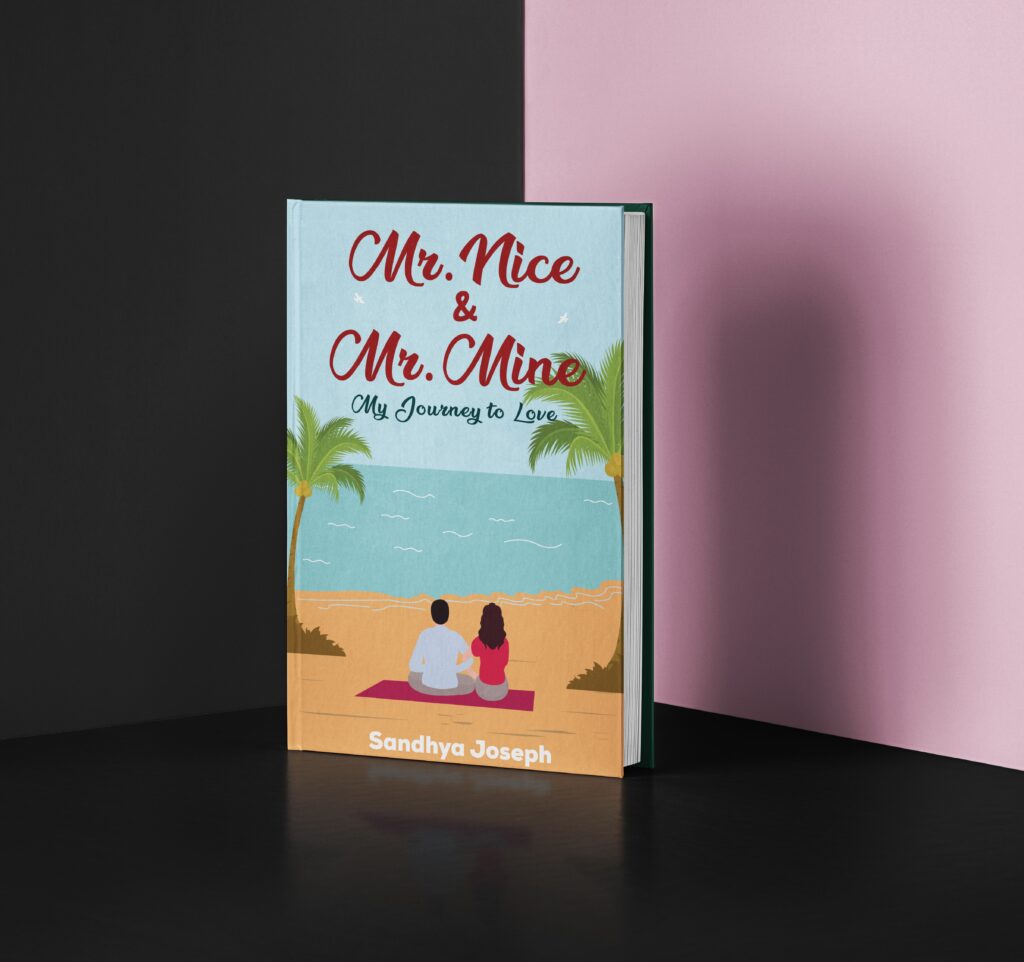
Depiction of Verbal/Emotional Abuse
Use of Ableist Language
Very Brief Description of Self-Harming Behaviour
Confronting Childhood Emotional Trauma
Infidelity
Brief Reference to/Description of Hospitalization & Life-Saving Medical Procedures.
Story Idea Origins
The Love Affair: A Short Story
The story idea that this novel is based on started as scribbled paragraphs in my diary and notebooks between 2005 and 2008.
The combined paragraphs eventually emerged as a short story titled, ‘The Love Affair.’
A local newspaper, ‘The Navhind Times,’ then published this initial version of the story in their weekend special edition ‘Zest’ under the section called ‘Imagine.’
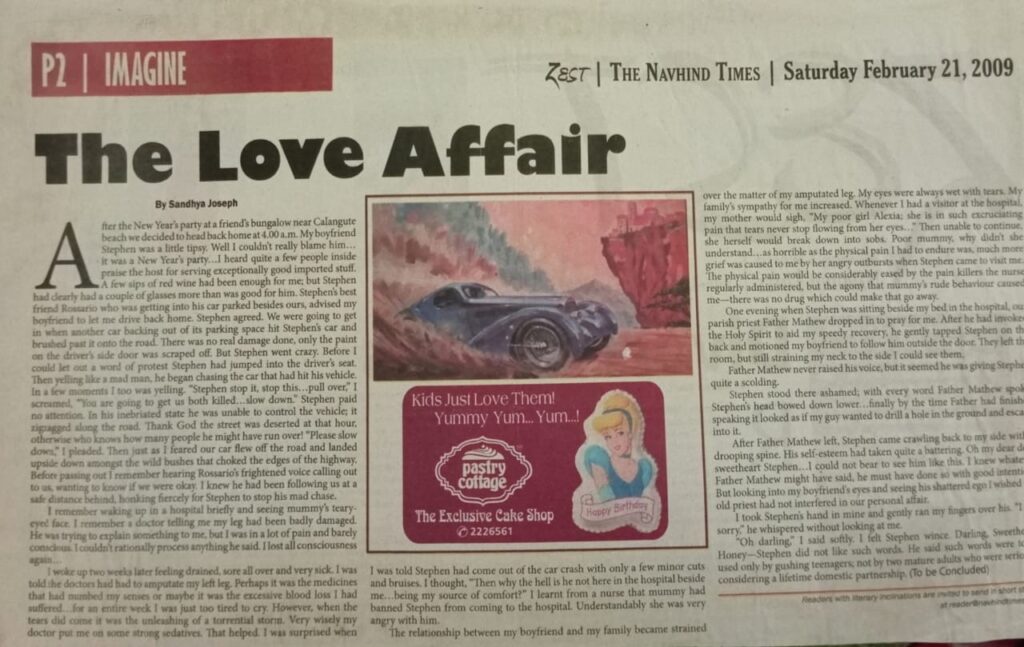
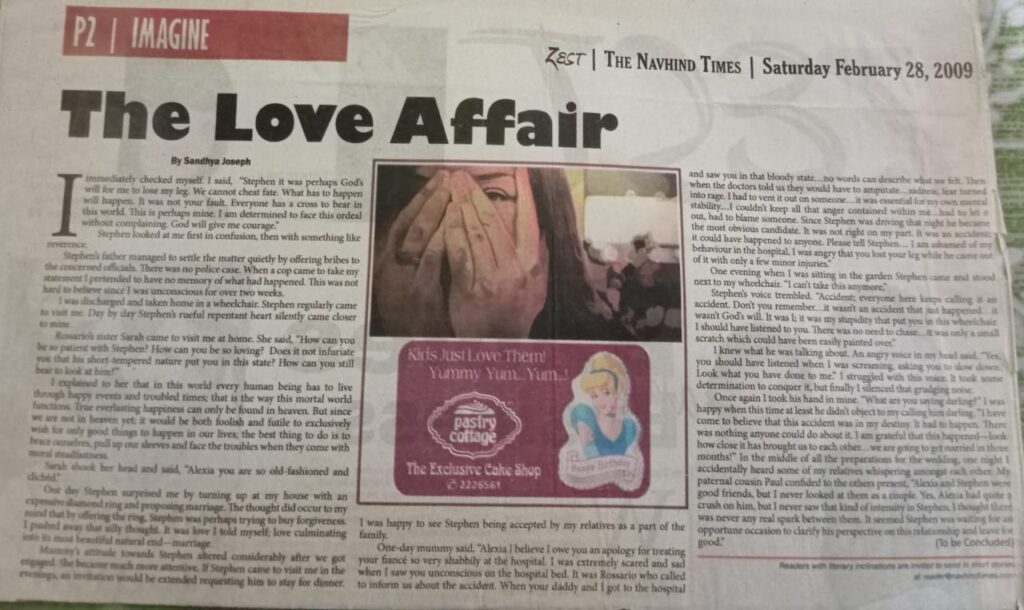
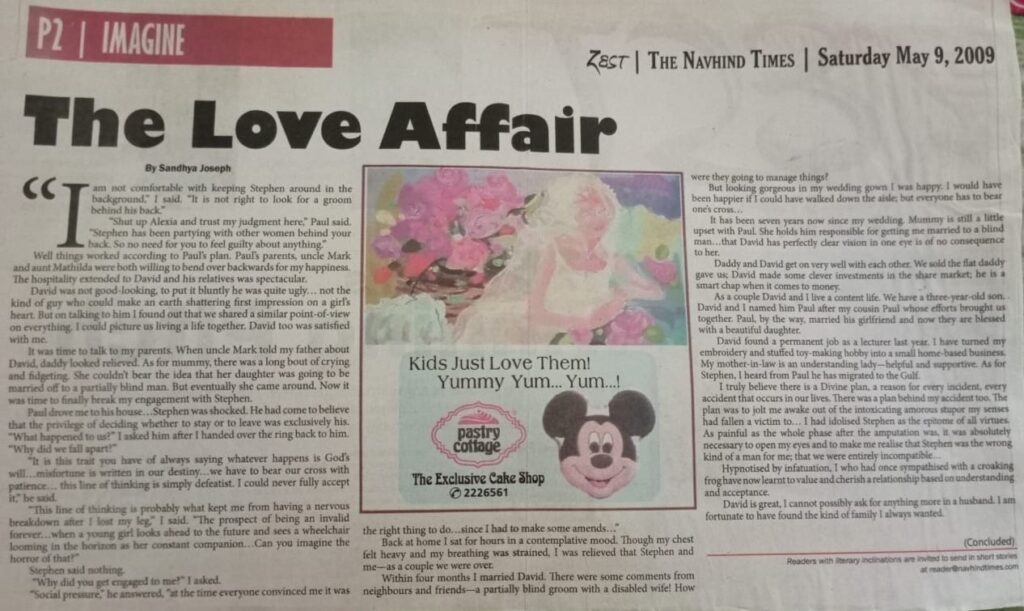
The short story appeared over the course of many Saturdays starting from February 21, 2009, to May 09, 2009.
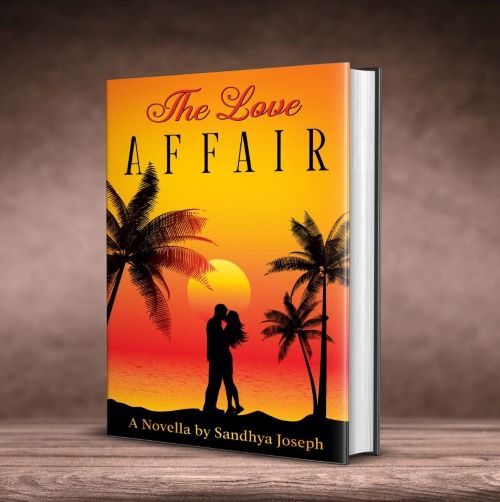
The Love Affair: A Novella
Through changing seasons, Alexia’s story was subjected to countless rewrites within the pages of my journals.
In 2021, this story idea was released as a short Novella (Kindle ebook). Though longer than the previous Short-Story format, admittedly, this version too had very few dialogue pieces from the protagonist herself. Therefore, she probably could not be seen as a fully developed character. Looking back, this character needed more pages to do her justice.
Mr. Nice & Mr. Mine: A Novel
Then, as usual, the words that made up this tale continued to evolve during private, quiet moments that could be stolen away from the persistent demands of real life. By the end of April 2024, the protagonist, Alexia, finally could live within the Novel format of ‘Mr. Nice & Mr. Mine: My Journey to Love.’ Here she had the space to say what she needed to… to voice her experience of love, heartbreak and reclaiming joy.
Primary/ Main Themes
Love, Marriage, Friendship & Family.
Secondary/ Minor Themes
Recovery & Healing (physical & emotional)
Female Entrepreneurship
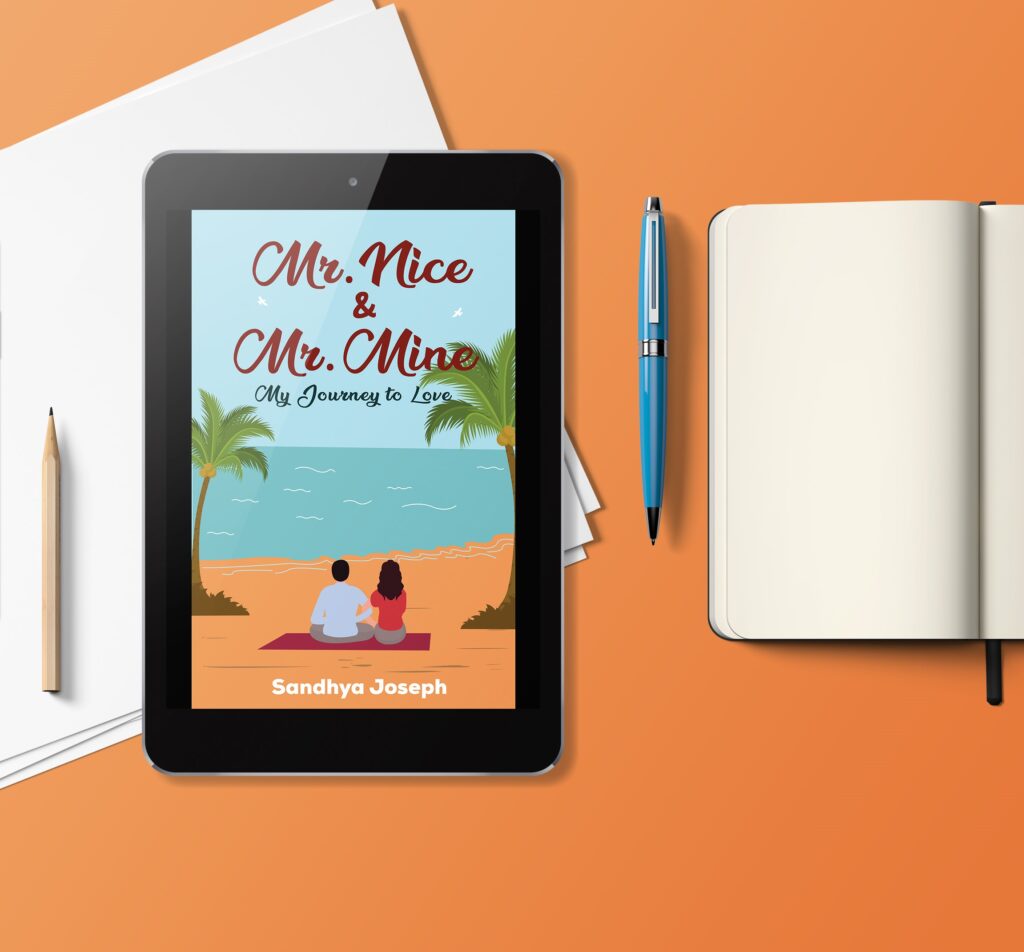
Fidelity & Commitment
Gaslighting /Verbal Abuse
Domestic Abuse (Spousal and Non-Spousal)
Emotional Health/ CPTSD
Economic Migration
Need for Inclusive Social Infrastructure
Living with Disability
Fate, Destiny & Divine Intervention
Overcoming Adversity
Self-Love & Personal Growth
Identity & Independence
Seeking Professional Help for Emotional/Mental Health Issues.
Setting
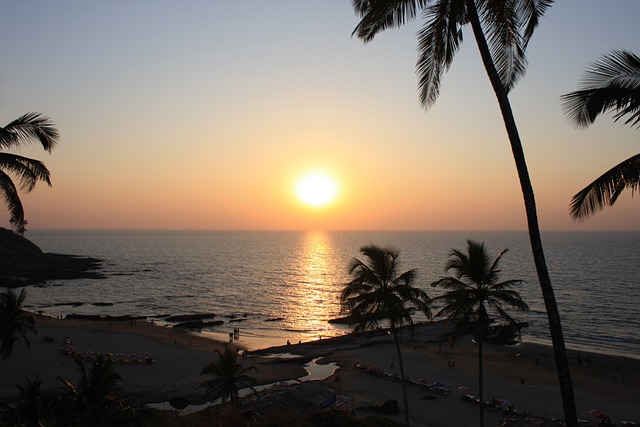
Here’s some (general and simplified) information (as it pertains to this novel) about the area/region that most of the story happens in. Kindly refer to official websites and records for more complete and authentic information. Also, images used in this section are royalty-free downloads from pixabay.com
Small Town
The story is set in a small, fictional, unnamed, coastal town near Calangute Beach in Goa, India. The tiny picturesque state of Goa is a popular holiday destination for both National and International tourists.
To the best of my knowledge, Calangute still retains its status as a Village Panchayat (as on the date of the ebook launch.) However, the infrastructure, cultural ethos, road traffic issues and lifestyle in the area is sufficiently “urban.” Therefore, in the novel, the characters refer to the place they live in as a small town.
Economy
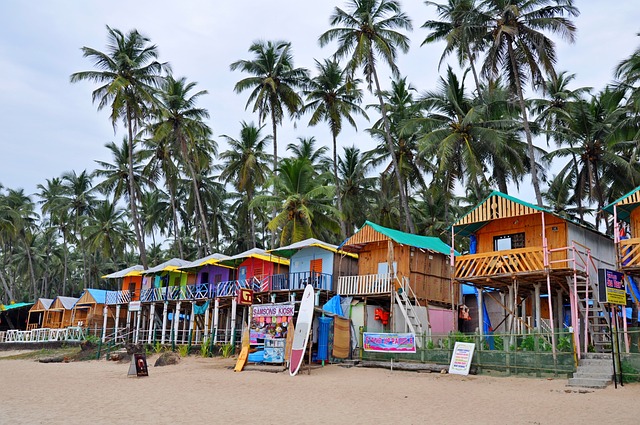
The economy in the coastal belt is largely centred around tourism & hospitality along with fishing and its related industries. Economic Migration is a thing in the region due to limited job openings in other sectors.
For years, the coastal belt, with its numerous beaches, remained the focus of the tourism industry. In recent years, however, hinterland eco-tourism is slowly beginning to attract the attention of the younger crowd.
Elsewhere in Goa, Agriculture, Pharmaceutical Production, Ship Building, Mining etc. are major economic activities. There are many other small factories and businesses too. However, these are not part of this story.
Colonial Heritage & Social Class
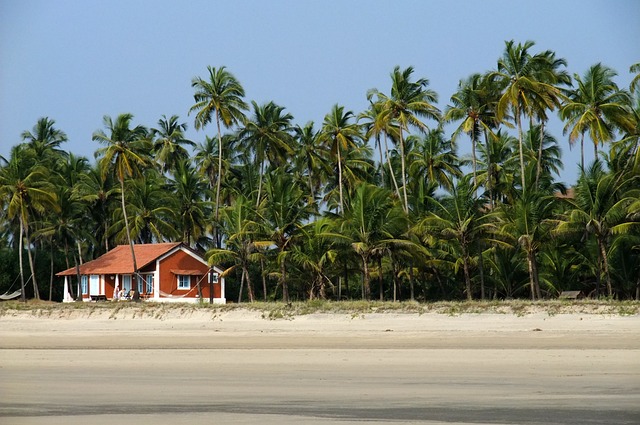
Goa was under Portuguese Colonial rule for over 400 years. As a result, the region has a larger Catholic demographic when compared to many other states. However, Christians are still a “minority” community. Information on the internet indicates Christians constitute roughly 25 % of the population.
Disclaimer: Mine is a work of fiction. Demographic profile of a region can change with time. If you need to quote exact demographic details, kindly rely on updated stats provided by appropriate, official authorities.
Caste and class classifications are complicated, nuanced social structures within any Indian society/community. Explaining the complexities of this social system is beyond the scope of this blog post. I did not intend to explore social class/caste as a theme in this novel.
However, some beta readers/ test readers/ ARC readers were curious about Alexia’s socio-cultural and ethnic identity. Few other readers concluded that, perhaps, some of the ‘difference of opinion arguments’ between ‘the couple’ were, at least, partially triggered by differences in social class/ caste.
So, here’s some more (simplified, generalised) information for curious readers. (Disclaimer: I am a fiction writer. For more complete, nuanced and authentic information, please refer to books authored by historians and sociologists who are experts in this area.)
During the period of Portuguese rule, many families converted to Christianity. However, the newly converted households often retained some variation of their previous caste affiliations. Thus, emerged Catholic Caste Classifications.
Brahmin subcastes (E.g. Goud Saraswat Brahmins), prosperous goldsmiths and a few rich merchant households were grouped into the Catholic caste of RC Brahmin (Bhamins/Bamonns). The converts from the Kshatriya caste and prosperous Vaishya Vani households became RC Chardos.
The Catholic community in Goa includes many other castes as well. But socially, culturally and economically, the Brahmin (Bhamin/Bamonn) and the Chardo, were seen as the traditional upper and affluent high classes/ castes in the Goan Catholic Caste hierarchy. These were seen as households of intellectuals, priests, landlords, descendants of ancient noblemen/princes and warriors, prosperous merchants and such others.
Alexia’s caste/ social class is not directly named in the novel. However, from the dialogues and descriptions in the novel, it may be inferred that Alexia (the protagonist & narrator) belongs to either the Catholic Brahmin (Bahmin/Bamonn) or the Catholic Chardo community.
Contemporary society is more flexible in its outlook towards social class/caste. In urban localities, traditional caste/class classifications no longer function as strict, watertight compartments. In the novel itself, there are many examples of characters who grow into positions of higher social status through entrepreneurship, education or economic migration.
Despite this, the fact that Alexia gets to grow up in a large house nestled within a huge, green parcel of land… the fact that she grew up surrounded by expensive antiques is largely thanks to the privilege of inherited, generational wealth of her social class. A privilege that, perhaps, most other characters in the novel have not experienced.
Wedding Customs
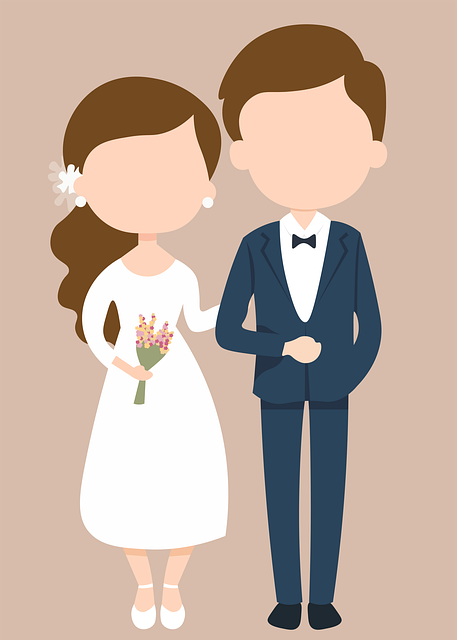
During the 400+ years of Portuguese rule, when some families converted to Christianity, they did not completely let go of traditional customs, cuisine and rituals… just modified them As and when these (customs/cuisine) appear in the story, I have tried to provide brief descriptions or dialogue hints.
Due to the length of the book and ease of reading experience, I had to cut out certain wedding customs that were not directly contributing to plot progression. So, the Chuddo Ceremony (where bangles are fitted onto the wrists of the bride-to-be), Bhuim Jevonn (meal in honour of the family’s ancestors), Appoune (Invitation to the bride’s house) and a few others were edited out of the manuscript. I extend my apologies to potential readers from Goa who may notice gaps in the pre-wedding preparation ceremonies and may also wonder about the absence of reference to post-wedding rituals.
The Ocean
The ocean that is spoken of in the novel is the Arabian Sea. The Arabian Sea is the northwest part of the Indian Ocean. The Indian Ocean is the third-largest of the world’s five oceanic divisions.
Language
The book is written in a conversational style. Occasionally, the grammar may sound wonky because it mimics the local speech patterns of the region.
… is used to indicate short pauses mid-conversation, hesitance to say something out aloud or things left half-unsaid.
The novel occasionally (very briefly) touches upon a few “heavy topics.” To balance this out/ to mask this, the language tone is intentionally casual, breezy, informally conversational, fast-paced and quick-moving… so that the reader doesn’t feel bogged down.
Difference in Language Usage
Dear reader, depending on where you are in the world, you may encounter regional differences in how the English Language is used in this ebook. If this happens, patience and understanding is requested.
For example, in Goa ‘utensils’ mostly refer to cooking pots and pans or steel/ silver/ copper containers. Curry dishes are stored in these containers.
In Goa people say prawn instead of shrimp, lift instead of elevator, footpath instead of pavement/sidewalk etc.
Structure
The novel does not have chapters, but it is broadly divided into five sections.
Some sections are meant to feel and be a bit longer.
Reason: There are no shortcuts to healing. When someone is jostling with emotional health (and other) issues, or is grappling to adjust to lifestyle changes, or is working to hit the reset button on their life and arrive at ‘upbeat, happy & hopeful…’ Initially, it can seem like having to wake up every other day and face a slightly different version of the same problem. It’s having to go round and round in circles and learning to take baby steps out of the loop.
Narrative Techniques Used
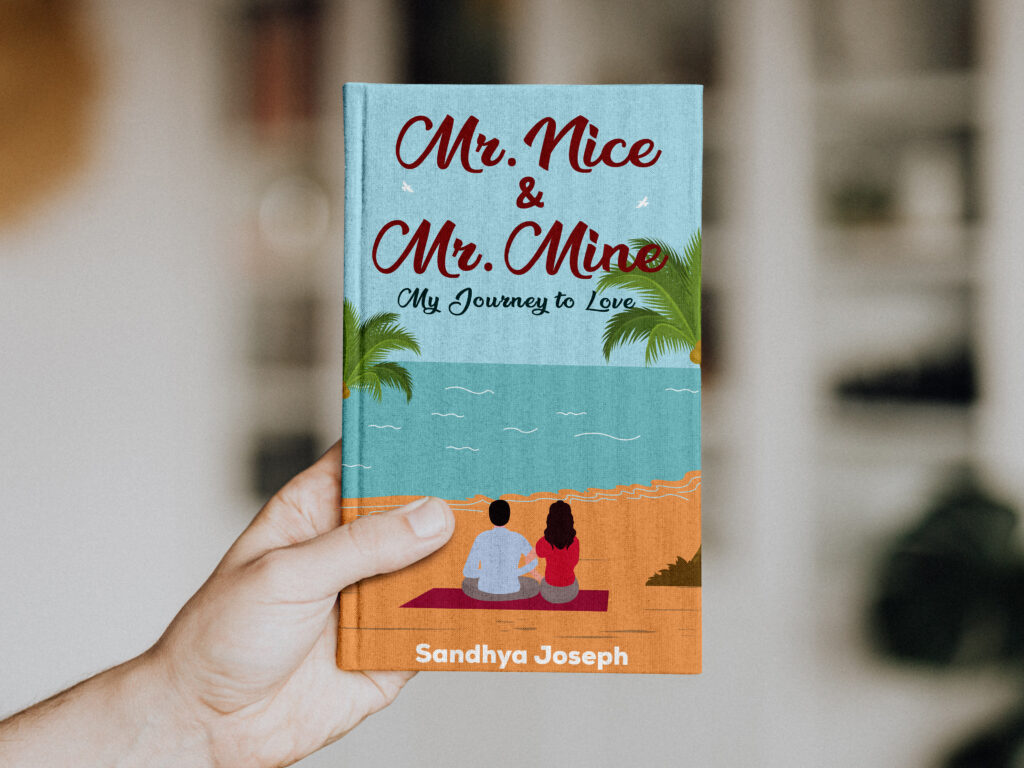
1. In Medias Res Technique: The novel starts right in the ‘middle of things’ during a period of upheaval in the main character’s life.
2. Timeline Shifts/ Flashbacks: These offer insights into what is causing characters to be where they are and behave the way they are “in the now.”
3. First-Person Narrator: We see everything the way Alexia is experiencing it or the way she is remembering it. We will only find out things when Alexia “finds out.”
